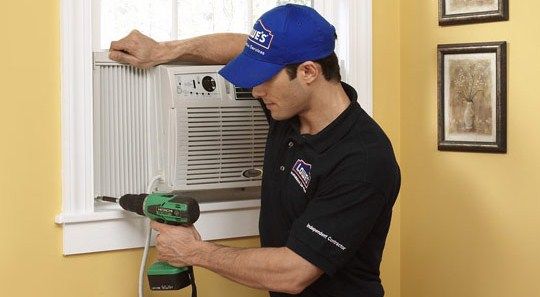Exploring the Comfort: All About Window AC Units
In the realm of cooling solutions, window air conditioners (AC) stand out as a popular choice for many households. These units offer a convenient and efficient way to regulate indoor temperature, providing relief during scorching summers. Let’s delve into the intricacies of window AC units, from their functionality to installation and maintenance, Window AC ensuring you have all the information you need to make informed decisions.
Understanding Window AC: A Brief Overview

A window AC, also known as a room air conditioner, is a compact cooling appliance designed to cool individual rooms or small spaces. Unlike central air conditioning systems that cool an entire building, window AC units are installed directly into windows, utilizing outdoor air for heat dissipation.
How Window AC Units Work
The mechanism behind window AC units is relatively straightforward yet effective. These appliances consist of key components such as a compressor, condenser, evaporator, and fan. The compressor compresses refrigerant gas, raising its temperature. This hot, pressurized gas then flows to the condenser coil located outside, where it dissipates heat and condenses into a liquid. The liquid refrigerant moves to the evaporator coil inside the unit, where it expands, absorbing heat from the indoor air. The fan blows indoor air over the evaporator coil, cooling it before releasing it back into the room. Finally, the refrigerant returns to the compressor to restart the cycle.
Choosing the Right Window AC Unit
Selecting the appropriate window AC unit requires consideration of various factors to ensure optimal cooling performance and energy efficiency.
Room Size and Cooling Capacity

One of the primary considerations when purchasing a window AC unit is the size of the room it will cool. Units with higher British Thermal Units (BTUs) are suitable for larger rooms, while smaller units suffice for compact spaces. Oversized units may cycle on and off frequently, leading to inefficient cooling and higher energy bills, whereas undersized units may struggle to cool adequately.
Energy Efficiency
Energy efficiency is another crucial factor to consider, as it directly impacts operating costs and environmental sustainability. Look for units with high Energy Efficiency Ratio (EER) ratings, indicating better energy efficiency. Energy Star certified models meet stringent energy efficiency guidelines set by the Environmental Protection Agency (EPA), offering significant savings on electricity bills.
Additional Features
Window AC units come with a range of features to enhance convenience and comfort. These may include programmable thermostats, remote controls, adjustable fan speeds, sleep mode, and noise reduction technology. Evaluate your preferences and lifestyle needs to choose a unit with the desired features.
Installation and Maintenance Tips
Proper installation and regular maintenance are essential for maximizing the performance and longevity of your window AC unit.
Installation Guidelines
Before installation, ensure the window opening is suitable for the dimensions of the AC unit. Follow the manufacturer’s instructions carefully, positioning the unit securely and sealing any gaps to prevent air leaks. Use support brackets or mounting kits for added stability, especially for larger units. Additionally, consider the direction of airflow and potential obstructions outside the window.
Maintenance Routine
Routine maintenance tasks can help keep your window AC unit running smoothly and efficiently. Clean or replace the air filter regularly to maintain optimal airflow and indoor air quality. Remove any debris or obstructions from the unit’s exterior, such as leaves, dirt, or debris accumulation. Inspect the condenser and evaporator coils for dirt or corrosion, cleaning them as needed to improve heat transfer efficiency. Check the seal around the window unit for cracks or leaks, repairing them promptly to prevent air leakage.
Benefits of Window AC Units
Window AC units offer several advantages that make them a popular choice for residential cooling solutions.
Cost-Effective Cooling
Compared to central air conditioning systems, window AC units are more affordable to purchase and install, making them an economical choice for budget-conscious consumers. Additionally, their energy-efficient operation helps reduce ongoing utility costs, further enhancing their cost-effectiveness.
Individual Room Control
Window AC units provide individualized temperature control for specific rooms or areas, allowing users to adjust cooling settings according to their preferences. This targeted approach to cooling can lead to greater comfort and energy savings by avoiding unnecessary cooling of unoccupied spaces.
Easy Installation and Portability
The installation process for window AC units is relatively simple and straightforward, requiring minimal construction or modification compared to central air conditioning systems. Additionally, their compact size and portability make them ideal for renters or homeowners who may move frequently and wish to take their cooling solution with them.
Conclusion
Window AC units offer a convenient and efficient cooling solution for individual rooms or small spaces. Understanding how these units work, selecting the right size and features, and following proper installation and maintenance guidelines are essential for optimal performance and longevity. With their cost-effectiveness, individual room control, and ease of installation, window AC units continue to be a popular choice for residential cooling needs.
For additional information on window AC units and cooling solutions, explore the following resources:
